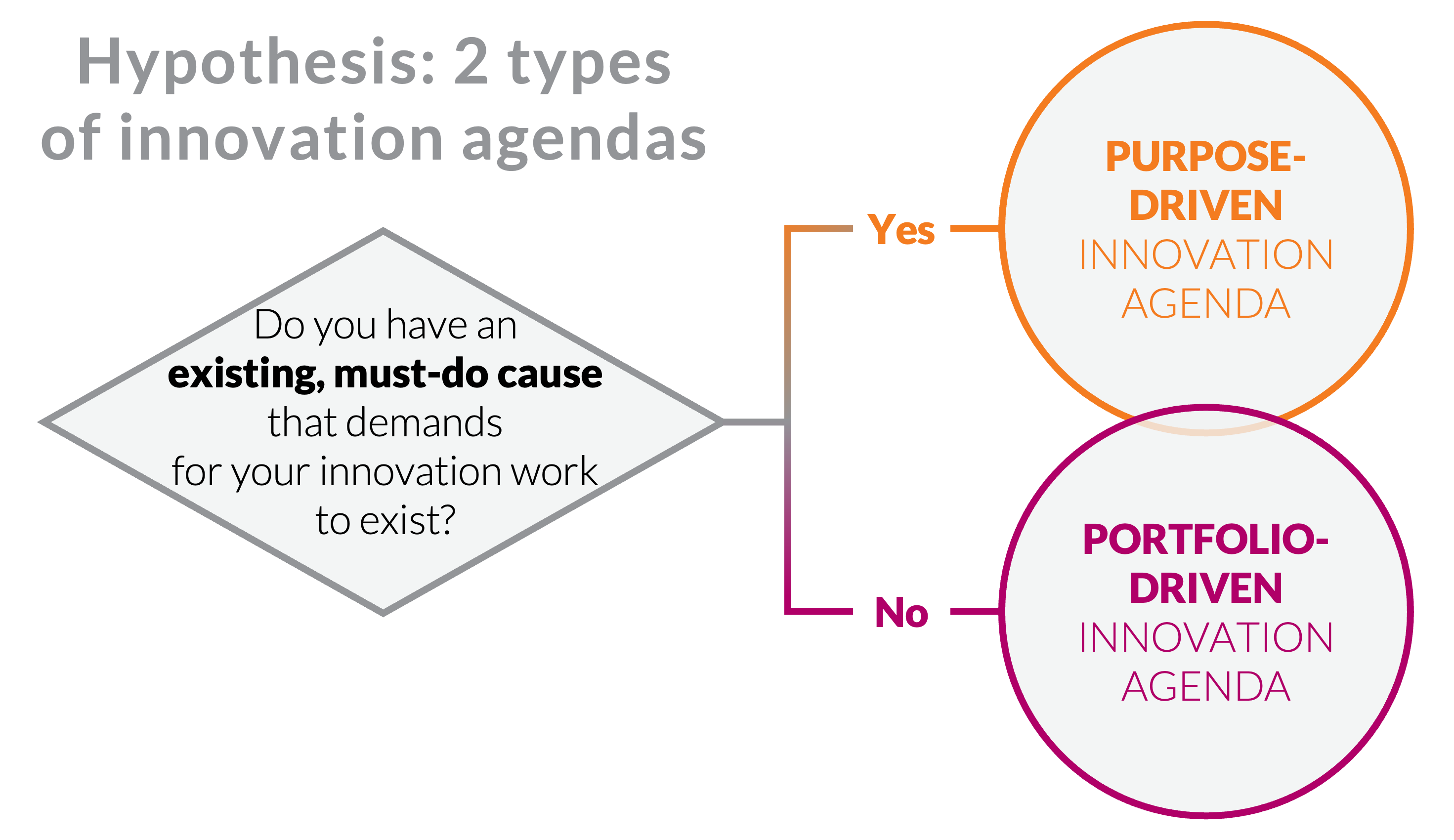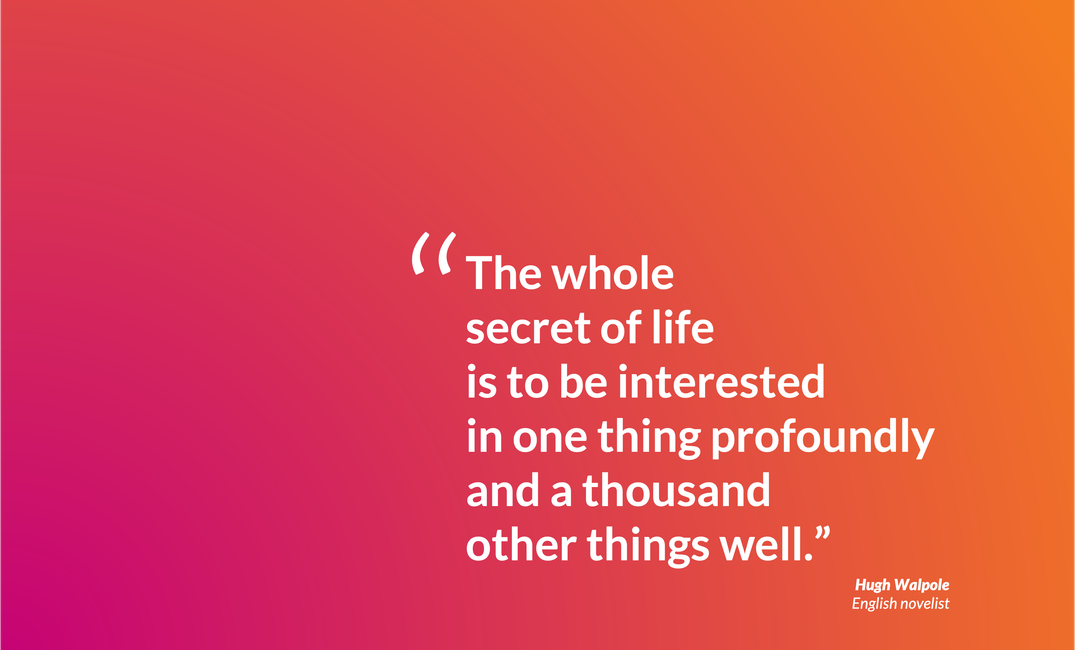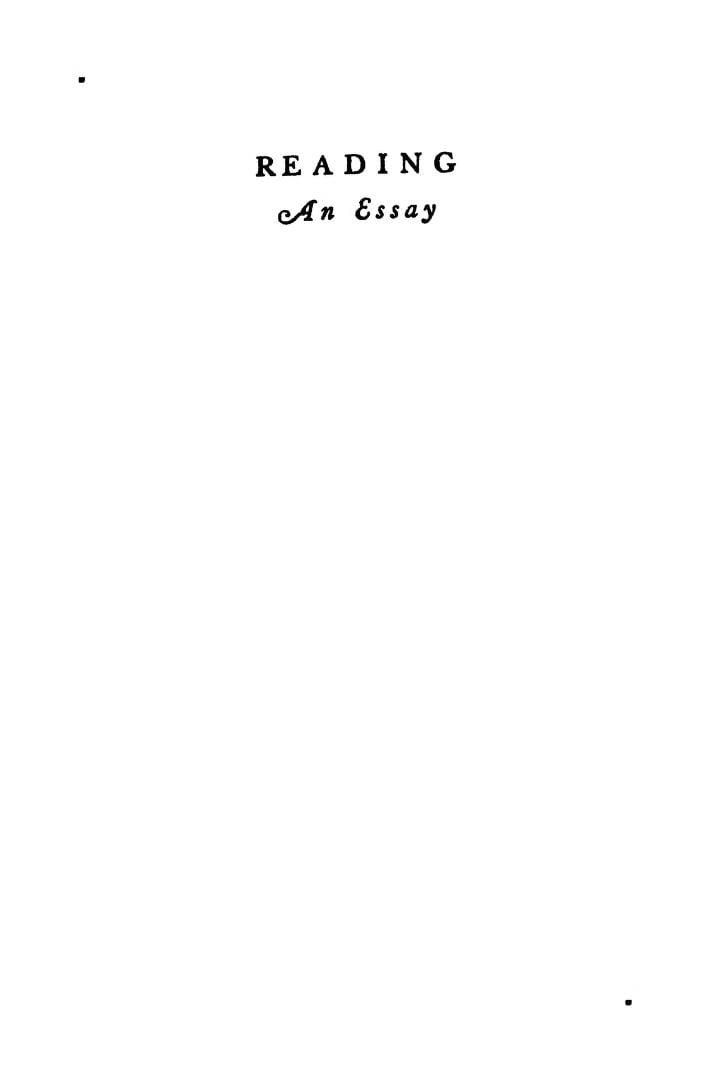"The whole
secret of life
is to be interested
in one thing profoundly
and a thousand
other things well."
– Hugh Walpole in Reading: An Essay
The point for innovation
Innovation agendas can come from two sources: Must-do purposes or effort portfolios:

In essence, portfolio-driven agendas mean that you will explore and/ or test any promising idea that fits your selection criteria. There is no shame in pursuing them for your innovation work. It's a straightforward and transparent way to go. Bosch, for example, has used that approach to apparently-great effect.
But purpose-driven agendas tend to produce better results, according to academic research findings (e.g., by Henderson (2021) and Wesseling et al), assuming that you can find a true must-do cause and then implement it effectively.
That last part of "... implement it effectively" is subtle and takes significant effort. (I will describe more specifics soon and link to them here.)
For now, the quote by Hugh Walpole beautifully describes just one aspect of that implementation:
Yes, innovation teams must be "interested in one thing profoundly," their actual purpose. But a "purpose" on its own is just a pretty statement you can print onto t-shirts or embroider onto pillow covers.
Purposes need activation too. And that activation involves concentric rings of many activities, those things that Walpole summarizes as the "thousand other things [in which you must be interested] well."
These "thousand other things" that a great purpose-driven innovation agenda needs fall into two broad camps:
- Things to consider: These are the topics that may be closer to Walpole's original intent–things on which you spend time merely because (and to the degree to which) you find them fascinating, worrisome, or otherwise interesting. They may appear (or even be) unrelated to your formal purpose. And you don't actually do any serious work related to them, other than monitoring them and considering their ongoing relevance to you.
These might topics might follow rigorous Trends & Foresights structures, e.g., by following a categorization according to the STEEPLED framework of social, technological, economic, environmental, political, legislative, ethical, and demographic factors. But they can also range far more widely, e.g., to include competitive activities, financial trends, organization-internal politics, and more.
Whatever approach you take, you must monitor these topics, although, collectively across all topics, even such light monitoring will take meaningful time. Not doing so will leave you blindsided before long. In theory, this is obvious. But it can be tricky in practice because deliverables can prove hard to define and because stakeholders may not even ask for it. So your best effort is to create a hyper-efficient practice for this work that you can run largely under the radar, with little resource drain. You might only mention this work (and magically reveal its presence) when you unearth major insights that then retroactively justify the work's existence. - Things to work on: Admittedly, Walpole did not likely intend his quote in this way. But for the sake of practicality, we'll extend it here, with apologies to him. This, after all, will be a part of your innovation agenda that reflects much of your work.
In short: Purposes must come alive through portfolios of "a thousand" activities.
"Having a must-do purpose" and being "focused" is not the same as "being pig-headed." In fact, the more steadfastly we hold on to our purpose and the more narrow our purpose is, the more flexible we must be in how we activate it. That's because while our purpose may be largely our own choice, what works in real life depends on the world beyond us: customers, competitors, regulators, the state of science and discovery, economic realities and more. We have to adapt to what can work. In other words: We can choose to march in the direction of our purpose, but we must do so on the path we find, even if they are windy.
In that way, Walpole reminds us of the structure of great, purpose-driven innovation agendas:
- Set a singular purpose, about which you care profoundly
- Activate it via "a thousand" related activities
- Be "interested in" and monitor "a thousand other things well"
Now, how to pull it off despite all the challenges and setbacks, that indeed may be a "secret," carefully kept by the very best innovation teams! 🤫
Source*
*Note: The quote is attributed online to Hugh Walpole, specifically to this essay. But I have not yet been able to confirm the quote's presence myself.
Further reading
Walpole, H. (1926). Reading: An Essay. Harper & Brothers. https://archive.org/details/in.ernet.dli.2015.167460/page/n5/mode/2up



